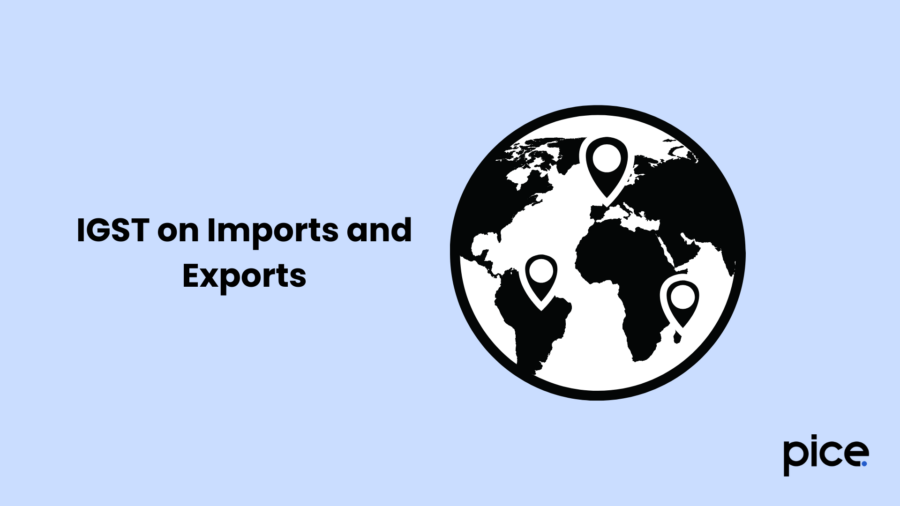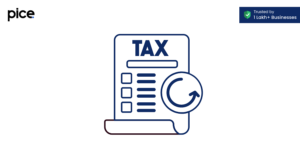An Overview of IGST: Integrated Goods and Services Tax
- 17 Jan 25
- 10 mins

An Overview of IGST: Integrated Goods and Services Tax
- Understanding IGST
- Key Features of IGST
- Explaining IGST With an Example
- Application of IGST on Imports and Exports
- Allocation of Tax Revenue: Which State Benefits?
- Essential Points to Remember About IGST
- Process for Determining GST Rates
- Guide to IGST Refunds
- Exploring the Different GST Categories
- H2 | Comparison Between Different GST Types
- The Bottom Line
Key Takeaways
- IGST simplifies interstate tax calculations and filing by replacing multiple indirect taxes with a single return process.
- IGST ensures tax revenue benefits the state where goods or services are ultimately consumed.
- IGST rates, set by the GST Council, are consistent across all states, eliminating variability in interstate taxation.
- Businesses can claim input tax credits for IGST paid on purchases, easing the tax burden and improving compliance.
- IGST applies to interstate transactions, imports, and exports, with exports being zero-rated to boost trade.
Before going into what is IGST (Integrated Goods and Services Tax), you should understand what GST (Goods and Services Tax) is. India is a federal country and both the Central government and the state governments have the authority to impose and collect taxes which are invested for the development of India. There are two types of taxes: direct taxes and indirect taxes. Among the two taxes, direct taxes are earned on income. Some examples include income tax and property tax. Whereas indirect taxes are levied on goods and services such as Goods and Services Tax (GST).
The Indian government introduced the Goods and Services Tax to simplify the tax structure. GST was passed by the parliament on 29th March, 2017 and it came into effect on 1st July, 2017. Goods and Services Tax is levied on the supply of goods and services and is a single domestic indirect tax law for the entire country. It has replaced many indirect taxes in India such as excise duty, Value Added Tax(VAT), luxury tax and service tax, etc. Here IGST is one of the 4 types of GST.
Understanding IGST
Integrated Goods and Services Tax is an indirect tax levied on the interstate supply of goods and services governed by the IGST Act, 2017. It is charged when a transaction involves the supply of goods or services from one state to another within India. This indirect tax also applies to import transactions as well as exports. Here exports are zero-rated and the tax collected is shared between the Central government and State government.
💡If you want to streamline your payment and make GST payments, consider using the PICE App. Explore the PICE App today and take your business to new heights.
Integrated Goods and Services Tax includes both Central Goods and Services Tax (CGST) and State Goods and Services Tax (SGST). It aims to ensure that goods and services crossing state or national borders are taxed evenly.
Key Features of IGST
Here are the key features of Integrated Goods and Services Tax:
- Consistent Rate: IGST taxation rates are fixed by the GST Council and they remain consistent across all states. This feature eliminates the vagueness of varying tax rates for inter-state transactions.
- Input Tax Credit: Businesses that pay IGST on their purchases while doing inter-state transactions are eligible to claim the input tax. This enables businesses to set off the IGST paid against their final tax liability and helps make the tax credit mechanism seamless.
- Destination Concept: When tax revenue is generated from an inter-state transaction, it goes to the destination state under IGST. Here the destination state is the state where the goods or services are finally consumed. This feature ensures that the tax authority of the destination state gets the benefits of tax revenue.
- Easy Compliance: Before IGST was introduced, interstate transactions involved complex tax calculations and needed separate filings for central and state taxes. Implementation of IGST has made calculating and filing simple by allowing businesses only to file a single return for all interstate supplies.
- Better Revenue Sharing: IGST makes it easy for central and state governments to share the tax revenue collected at interstate trade. This creates cooperation between the two levels of government and both can benefit from economic activity in the country. This indirect tax covers both Business-to-Business (B2B) and Business-to-Consumer (B2C) transactions between the states in India.
Explaining IGST With an Example
You may consider this example to understand what Integrated Goods and Services Tax is:
A Mumbai-based company ABC Ltd. sells a product worth ₹12 lakh to a buyer in West Bengal and the applicable IGST rate for the product is 12%. In this case, the total amount payable by the buyer in West Bengal will be calculated as follows:
12,00,000 + 12,00,000 * 12% (applicable GST rate here)= ₹1,44,000.
Now the Central government will collect the amount. After that, this amount will be split between the Central government and the West Bengal State government.
Application of IGST on Imports and Exports

The import of goods from overseas into India is considered to be an interstate supply. In this case, IGST (Integrated Goods and Services Tax) will apply to all imported commodities along with customs duties as they are applicable.
The supply of any service where the supplier is located outside India, the recipient is in India and the place of supply of service is also in India is defined as the import of services under the IGST Act, 2017.
Exports of goods and services are classified as zero-rated supplies. Exporters can choose to export under a bond or Letter of Undertaking (LUT) without payment of tax and claim a refund of ITC. Alternatively, they can pay IGST using ITC or cash at the time of export and then claim a refund of the IGST paid.
Allocation of Tax Revenue: Which State Benefits?
When it comes to the allocation of tax revenue, the importing state gets the accrued benefit of taxes. When a transaction is done between states, the seller must bill IGST on the invoice and the buyer pays the transaction amount. After this, the seller remits it to the Central Government, which then distributes the amount between the Central and the respective government of the importing state.
Essential Points to Remember About IGST
These are the following points to remember about IGST:
- IGST lowers the tax burden for businesses by taxing transactions between two states only once.
- This indirect tax is a destination-based tax and it will accrue to the importing state.
- Implementation of IGST helps maintain transparency of the Input Tax Credit chain in inter-state supplies.
- Accurate IGST calculations and timely filing of returns guarantee smooth business operations.
Process for Determining GST Rates
GST council oversees setting the IGST rate slabs by regularly reviewing the rate slabs for goods and services. GST rates are usually higher for luxury commodities and low for necessities. There are 4 slabs of GST rates in India such as 5%, 12%, 18% and 28%. These rates are subject to revisions decided during GST Council meetings.
Guide to IGST Refunds

To claim an IGST refund, shipping bills submitted to customs serve as the refund application. This applies if the exporter has filed a valid Form GSTR-3/3B return and the person in charge of the conveyance transporting the goods has furnished an export manifest or report.
Steps to Check Your IGST Refund Status
You can check your IGST refund status paid on account of the Export of Goods after logging into the GST portal and following these steps:
- First, navigate to Services > Refunds > Track Status of invoice data to be shared with the ICEGATE command.
- Then, select the Financial Year and Month from the drop-down list and click on the 'Search' button.
- Finally, the search results shall be displayed.
Exploring the Different GST Categories
There are 4 different categories of GST. These are Integrated Goods and Services Tax (IGST), State Goods and Services Tax (SGST), Central Goods and Services Tax (CGST) and Union Territory Goods and Services Tax (UTGST).
Among these, UTGST, a component of the GST regime in India, applies to the transaction of goods and services within the Union Territories of India. These are the regions directly governed by the Union Territory government of India such as Chandigarh, Dadra and Nagar Haveli, Ladakh, Daman and Diu, Lakshadweep and the Andaman and Nicobar Islands.
State Goods and Services Tax (SGST)
SGST is levied by state governments and it acts as a dual tax, meaning both the Central and State governments collect revenue from the intra-state transaction.
Central Goods and Services Tax (CGST)
The Central Government of India levies Central Goods and Services Tax and here too both the Central and State governments jointly collect revenue according to the type of transaction.
H2 | Comparison Between Different GST Types
Here is a comparison between different GST components such as IGST, UTGST, CGST & SGST, showing their key difference-
| IGST | UTGST | CGST | SGST |
| IGST is levied on the transaction of inter-state goods and services | Union Territory Goods and Services Tax is levied on the intra-state supply of goods and services within the Union Territories. | CGST is levied on the intrastate transactions of goods and services between states, alongside SGST or UGST. | SGST is levied on the transactions of intrastate supplies of goods and services. |
The Bottom Line
Integrated Goods & Services Tax (IGST) is one of the components of Goods and Services Tax which has replaced several indirect taxes in 2017. IGST is levied on the inter-state transactions of goods and services and the tax collected is shared between the Central Government and State Governments. Here, the GST Council fixes the IGST rates which are the same across all states.
The introduction of IGST has simplified the complex tax calculations used before as it requires a single return for all interstate supplies. Since through IGST, both the central & state governments can equally gain revenue from transactions of goods and services made between different states in the country, it greatly affects India’s economic development.

















